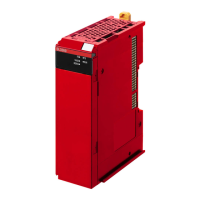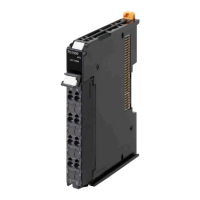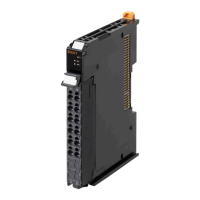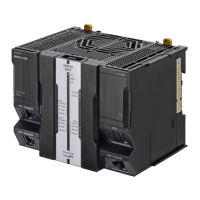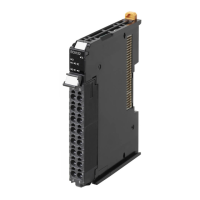33
Terminology
NX-series Safety Control Unit User’s Manual (Z930)
operating mode The status of the Safety CPU Unit, when it is in normal operation, that the user changes to
run or check the operation of the Safety CPU Unit.
There are the three modes: PROGRAM mode, DEBUG mode, and RUN mode. You can
use DEBUG mode only when the Sysmac Studio is online with the Safety CPU Unit.
PROGRAM mode A mode that indicates that execution of the safety programs is stopped. You cannot con-
trol BOOL variables, use forced refreshing, or change present values.
RUN mode A mode that indicates that execution of the validated safety programs is in progress.
Unlike DEBUG mode (RUN), the validated safety programs in the non-volatile memory of
the Safety CPU Unit are executed.
safe state The status of a device or piece of equipment when the risk of danger to humans has been
reduced to an acceptable level.
safety application data The data that contains the settings that are used to operate the NX-series Safety Control
Units. It consists of the safety programs, safety task, and variables. You use the Sysmac
Studio to create this data, and then transfer and execute it on the Safety CPU Unit. On the
Sysmac Studio, this data is shown as the slave parameters. The location where the safety
application data is stored on the Safety CPU Unit depends on whether the safety pro-
grams have been validated. (Unvalidated safety programs are stored in the main memory,
while validated safety programs are stored in the non-volatile memory.)
safety control A type of control that uses devices, functions, and data that are designed with special
safety measures.
Safety Control Unit The generic term for a Unit that is used in safety controls.
Safety CPU Unit A CPU Unit that is used for safety controls. This is a type of NX Unit.
safety data type The data type for a safety signal.
safety function A function that is executed by the safety control system to achieve a safe state for a
machine hazard.
Safety I/O Unit An I/O Unit that is used for safety controls. This is a type of NX Unit.
safety input device An input device that is designed with special safety measures for use in safety controls.
The generic term for safety input devices, such as emergency stop pushbutton switches
and safety door switches.
safety input function A function that evaluates whether the signals that are input on a safety input terminal are
normal or abnormal.
Specific safety evaluation functions include test pulse evaluation and dual channel evalu-
ation.
When the evaluation result shows an abnormality, the safety input data is made inactive
(OFF).
safety output device An output device that is designed with special safety measures for use in safety controls.
The generic term for safety output devices, such as safety relays.
safety output function A function that evaluates whether the values of safety output data and the output signals
on safety output terminals are normal or abnormal.
S
pecific safety evaluatio
n functions include test pulse evaluation and dual channel evalu-
ation.
When the evaluation result shows an abnormality, the output signal on the safety output
terminal is turned OFF.
safety process data communi-
cations
A type of I/O data communications that is used for safety control purposes.
safety program User programming for safety controls in the Safety CPU Unit.
This term is used to differentiate from the user program in the NJ/NX-series CPU Unit.
Safety programs are programmed in the FBD language.
safety reaction time The time required for the system to enter a safe state in a worst-case scenario after the
occurrence of a safety-related input (press of an emergency stop pushbutton switch, inter-
ruption of a light curtain, opening of a safety door, etc.) or device failure.
The reaction time of the system includes the reaction times of sensors and actuators, just
like the reaction time for a Controller or network.
Term Description

